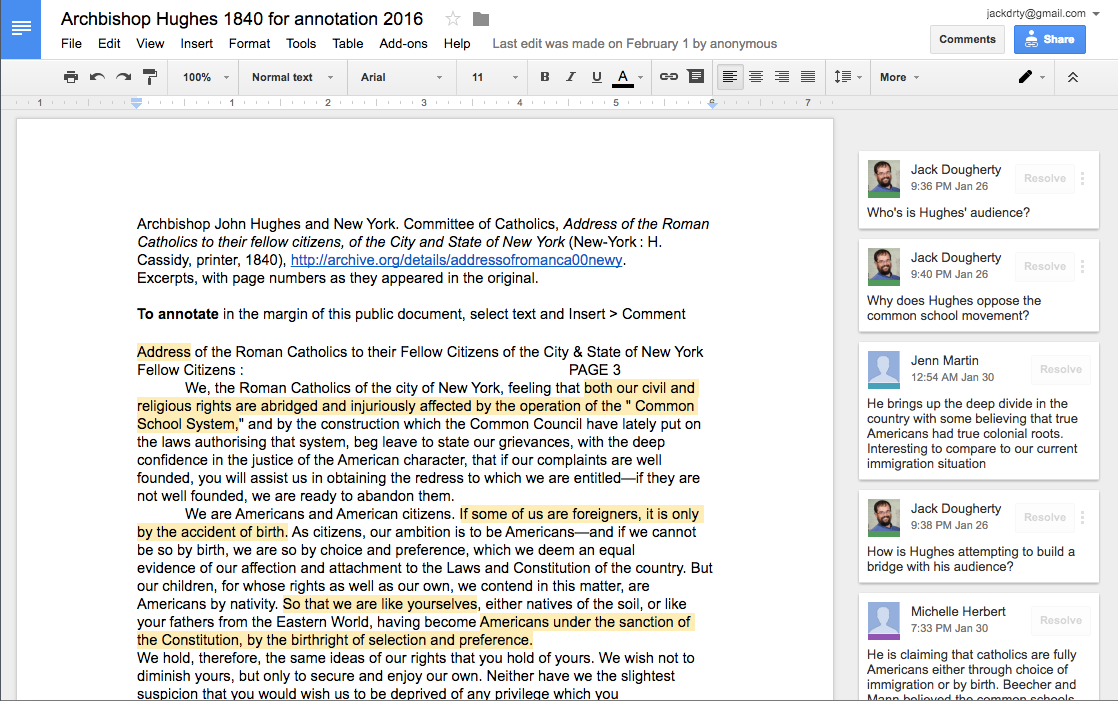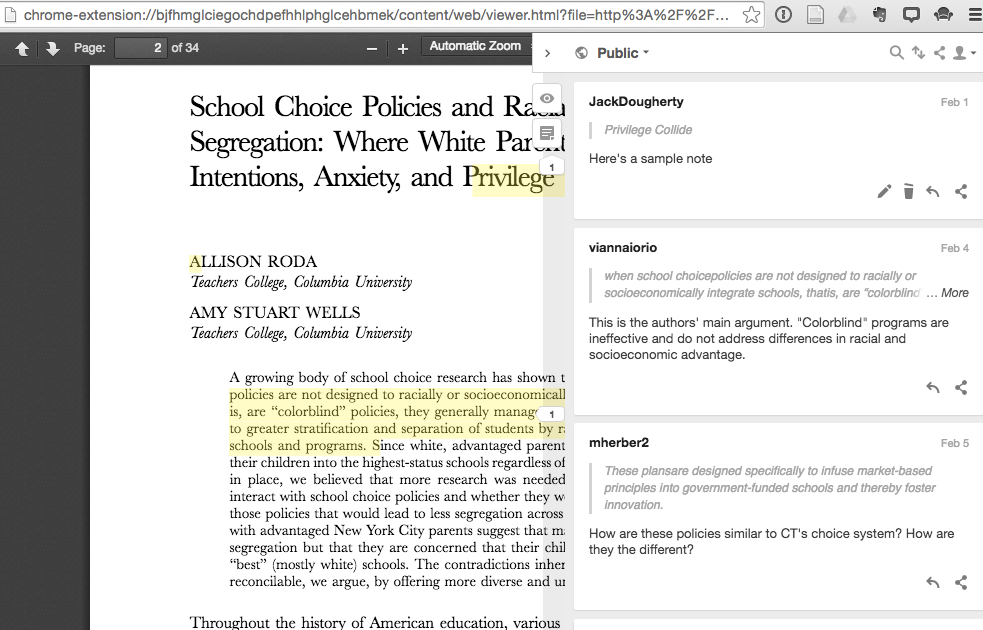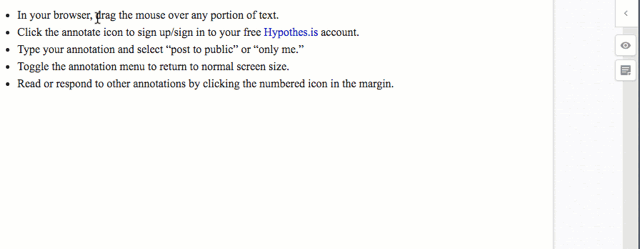Collaborative Annotation webinar with Michelle Herbert and Hypothes.is

Today Michelle Herbert (Trinity IDP student) and I were guests on “Collaborative Annotation in the History Classroom,” a webinar hosted by Jeremy Dean, Director of Education at Hypothes.is. The open-source Hypothes.is annotation tool is growing in popularity among college instructors because it allows students to share their reflections in the margin of a text — such as a website or PDF document — with the public or only members of a particular group. Michelle was the ideal student guest because she learned how to use two different commenting tools in two courses with me this spring, and she began using Hypothes.is as a personal note-taking tool on her individual PDF files. Everyone appreciated having a student perspective in this professor-heavy conversation about learning.
During the webinar, I offered these links to illustrate how we use annotation tools in my class projects, and Michelle offered reflections from her perspective as a student.
My Ed Reform Past & Present syllabus, and a link to a 19th-century primary source text pasted into a Google Document. During the first few weeks of the course, to help students learn to “read like an historian,” as Sam Wineburg encourages us, I insert questions into the margin with Google Doc comments, and assign students to respond and/or add their own annotations, then lead a discussion of the text in class. This is not a Hypothes.is example. Instead, I use Google Docs here because it’s a tool that is already familiar to most of them, which matters a great deal during the first few weeks, when I overwhelm them with unfamiliar historical content and other digital tools. Also, these public domain sources are available in plain text, so Google Doc commenting works nicely. See a screenshot:

In my Cities Suburbs and Schools syllabus, we use Hypothes.is because it’s the best tool for shared commenting on PDF files. For this class, I download a copyrighted PDF of a journal article, make sure that it’s OCRed (optical character recognized), and upload it to our seminar’s password-protected Moodle learning management system. Each student signs up for a free Hypothes.is account, and I assign teams of students to annotate and lead the discussion for specific PDF readings. Since only students in my seminar can access our Moodle site, their Hypothes.is comments are limited to our class. Each semester, I can upload a fresh PDF for new annotations. See what it looks like here:

For my On The Line history book-in-progress, I encourage readings to post comments on draft chapters that appear on a self-hosted Pressbooks/Pressbooks Textbook site. The latter plugin includes built-in support for Hypothes.is, which means that readers do not need to install the browser tool, but they still need to sign up for a free account. To help newcomers understand this tool, I created a “How to comment page” as shown in this animated GIF loop. Updated 2019: I removed this commenting feature from the book, but am keeping the GIF loop to show how it appeared at that time.

During the Q&A, one topic that came up was the tension between public writing and student privacy regarding these web annotation tools, so I shared an essay I wrote on that very topic in a recent open-access volume I co-edited, Web Writing: Why and How for Liberal Arts Teaching and Learning.
Check out the entire webinar on YouTube. Our segment begins around the 10 minute mark.
